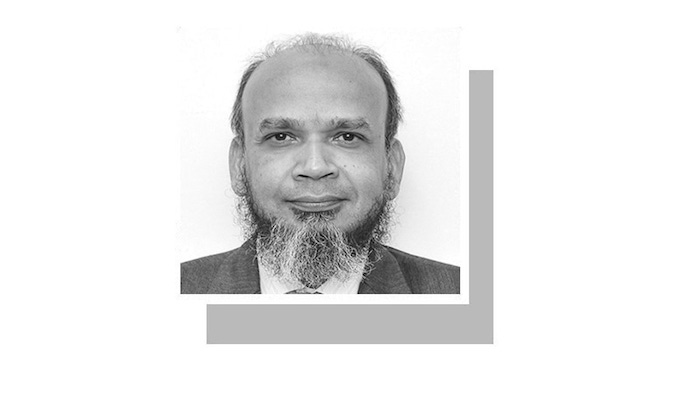Pakistan is one of the eight countries in the world with nuclear weapons. This places us in the same league as the United States, Russia, the United Kingdom, China, France, India, and North Korea, all of whom have nuclear weapons. The employment of nuclear weapons as a deterrent has kept the country safe from foreign aggression, but the United States’ continued reliance on fossil fuels puts its energy supply in jeopardy. This is not encouraging news for a nuclear power plant.
Together with the other 31 countries that utilise nuclear reactors to generate electricity, we produce nuclear power for peaceful purposes. The current geopolitical climate, highlighted by the conflict between Russia and Ukraine, highlights the importance of growing the peaceful use of nuclear energy and decreasing the use of fossil fuels.
‘Atoms for peace’ is a reference to Eisenhower’s speech to the United Nations in 1953, which led to the formation of the International Atomic Energy Agency (IAEA) in 1956.
The white man’s burden takes in peculiar forms. Gen. Eisenhower’s guilt over the destruction of Nagasaki, if not Hiroshima, motivated him to use atomic bombs to “civilise” the rest of the globe. He suggested coming up with ways to allocate this fissionable material to benefit humanity’s peaceful endeavours. The goal is to use nuclear power for peaceful purposes, such as in agriculture, healthcare, and other fields requiring the expertise of trained professionals. Specifically, it would serve the goal of bringing reliable electricity to previously unconnected regions.
With the intention “to expedite and widen the contribution of atomic energy to peace, health, and prosperity across the world,” the IAEA adopted Eisenhower’s suggestion into its statute. To the extent possible, it will make sure that any help is given by it, at its request, or under its supervision and control is not put to use for military ends.
The United States originally provided a five megawatt (MW) research reactor of the swimming pool variety as part of the Atoms For Peace initiative, but this was increased to ten megawatts (MW) later on. According to the PAEC website, Pinstech uses this and another 27MW research reactor under PAEC’s aegis for R&D, teaching, and training.
Whenever we think of nuclear power, images of mushroom clouds and the tragic destruction of Hiroshima and Nagasaki come to mind. Images of nuclear testing over the coral reef of Bikini Atoll in Marshall Islands may also appear.
The US forcibly relocated the atoll’s inhabitants and detonated 23 nuclear weapons from 1946 to 1958, making the atoll inhabitable. Radiation levels are still extremely high and unsafe for living there.
In 2021, Pakistan’s reactors produced 15.8GW of power or 10.6 percent of the country’s total. 89.4 percent came from nonrenewable resources, such as water and coal. Pakistan is ranked #18 out of 32 countries for its proportion of nuclear electricity generation in 2021 and #22 overall.
When it comes to nuclear testing, Pakistan is alone. It did not detonate its weapon above or below the water. It blew it up in Chaghi, at the foot of a mountain. Many of us would have witnessed the moment of triumph when the mountain glowed an orange-red as it caught fire. Quickly, the test video clip concludes. Spectators like myself can’t decide if the mountain was destroyed or is still standing.
What are the current radiation levels in the region? Even if it has little to do with the question at hand, a comparison with the Pokhran and Bikini Atoll tests is inevitable. I have no doubt that our brilliant nuclear experts have made important discoveries in this field. When it comes to our 1998 trial, we need a one-of-a-kind data collection.
With this kind of success under our belts, expanding our use of nuclear reactors to meet the electrical needs of the country’s power-starved regions shouldn’t be too challenging.
In a recent decision, the European Union deemed nuclear power to be environmentally favourable. There is widespread agreement that nuclear energy is a useful tool in the fight against climate change due to its minimal carbon footprint. Plus, it offers reasonable long-term costs. The PAEC reports that its average rate is only Rs9.25 per unit, significantly lower than the average tariff of Rs14.80 for oil. Next to hydroelectricity, this is the cheapest option available.
Since sanctions prevent us from sourcing uranium from international markets, we must rely more on our ties to China, which has already supplied not only civilian nuclear reactors (currently running in Chashma and Karachi) but also guaranteed fuel supply for the entire 60-year lifespan of these facilities. To extract uranium, we need to look for it in its native form.
Mahnur is MS(development Studies)Student at NUST University, completed BS Hons in Eng Literature. Content Writer, Policy analyst, Climate Change specialist, Teacher, HR Recruiter.










